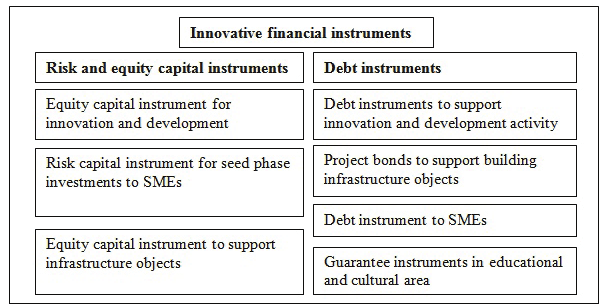💹 Financial Instruments and Innovation—Fueling Growth, Risk Management & Access
📌 What Are Financial Instruments?
Financial instruments are contracts or securities that represent a monetary value. They can be
-
Equity-based (e.g., stocks)
-
Debt-based (e.g., bonds)
-
Derivative-based (e.g., options, futures)
These instruments help investors allocate capital, manage risk, and earn returns.
🧠 What is Financial Innovation?
Financial innovation involves the creation and development of new financial products, technologies, institutions, and processes to:
-
Improve financial services
-
Reduce costs or risks
-
Enhance accessibility
It plays a vital role in evolving financial markets and increasing efficiency.
🧾 Types of Financial Instruments
| Category | Examples | Purpose |
|---|---|---|
| Equity | Shares, Preferred stock | Ownership in a company |
| Debt | Bonds, Debentures, Treasury Bills | Borrowing funds with repayment terms |
| Derivatives | Futures, Options, Swaps | Hedging or speculation on future prices |
| Hybrid | Convertible bonds, Warrants | Combine features of debt and equity |
| Money Market | Commercial paper, Certificates of deposit | Short-term liquidity instruments |
🔍 Examples of Financial Innovation
✅ Traditional Innovations
-
Mutual Funds: Pooling investor money for diversification
-
Credit Cards: Instant consumer credit
-
Leasing and Hire Purchase: Asset access without ownership
🚀 Modern Financial Innovations
-
Derivatives: Futures, options, swaps for risk management
-
Securitization: Converting loans (like mortgages) into tradable securities
-
Exchange-Traded Funds (ETFs): Index-tracking investment products
-
Cryptocurrencies: Decentralized digital currencies (e.g., Bitcoin, Ethereum)
-
Robo-Advisors: AI-driven automated investment platforms
-
DeFi (Decentralized Finance): Blockchain-based, peer-to-peer finance
-
Green Bonds & ESG Funds: Financial tools for sustainability-focused investing
📈 Benefits of Financial Innovation
| Benefit | Description |
|---|---|
| 💰 Access to Capital | Easier financing for individuals and companies |
| 🧩 Risk Management | Tools like derivatives hedge against market risks |
| 🌍 Financial Inclusion | New platforms reach unbanked and underserved areas |
| ⚙️ Operational Efficiency | Digital tools reduce cost and friction |
| 🎯 Targeted Investing | ESG funds and ETFs enable customized exposure |
⚠️ Risks of Financial Innovation
| Risk | Example |
|---|---|
| Complexity | Derivatives like CDOs (2008 crisis) |
| Regulatory Gaps | Shadow banking, crypto assets |
| Speculative Bubbles | Tech stocks (2000), crypto (2021) |
| Cybersecurity Issues | FinTech platforms vulnerability |
🏦 Role of Regulators
Regulators like
-
RBI (India)
-
SEBI (India)
-
SEC (USA)
-
BIS, FSB, IMF globally
Ensure:
-
Transparency
-
Risk control
-
Consumer protection
-
Responsible innovation
📝 Summary Table
| Aspect | Financial Instruments | Financial Innovation |
|---|---|---|
| Core Idea | Contracts representing value | Development of new financial tools |
| Types | Equity, debt, derivatives | Derivatives, ETFs, crypto, DeFi |
| Purpose | Investment, lending, hedging | Efficiency, risk reduction, access |
| Risks | Market, credit, liquidity | Complexity, lack of regulation |
🔮 Future Trends in Financial Innovation
-
AI and ML in finance (predictive analytics, credit scoring)
-
Central Bank Digital Currencies (CBDCs)
-
Tokenization of real assets
-
Sustainable finance instruments (e.g., social impact bonds)
-
Biometric authentication & digital identity

Comments
Post a Comment
Friendly & Inviting:
We'd love to hear your thoughts — feel free to share a comment below!
With Moderation Reminder:
Comments are moderated. Your comment will appear once approved.
With Community Guidelines:
Please be respectful and stay on topic. Spam and rude comments will be deleted.